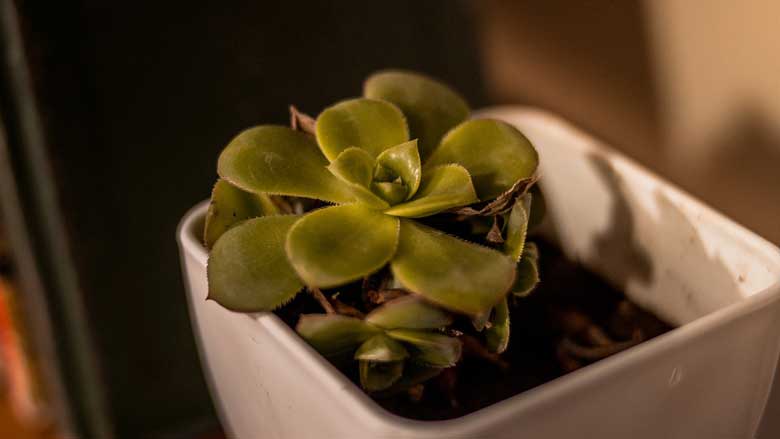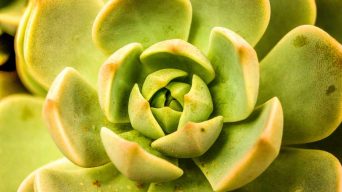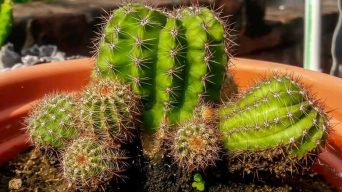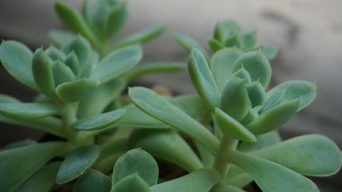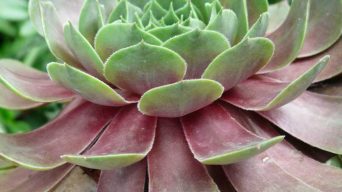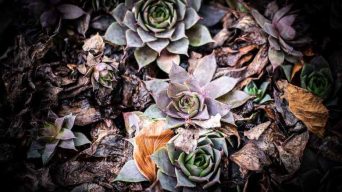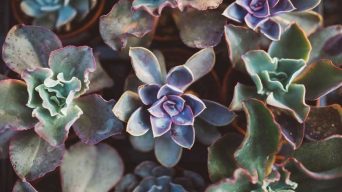Succulent root rot is a fungal infection that harms the plant’s roots. Overwatering, poor drainage, and root damage are common causes. To prevent it, use well-draining soil, water sparingly, repot every two years, and ensure adequate sunlight and airflow. Treatment involves trimming affected roots, repotting if necessary, and using organic remedies for fungal infections. Early detection is key to saving your succulents from this destructive ailment.
It can be hard to watch succulents wilt and die. If you have succulent root rot, it’s time to take action!
Succulents are popular plants for many reasons, but root rot is the enemy of this gorgeous plant.
Whether succulents are your favorite or not, root rot must be stopped before it takes over your whole garden.
This article will provide a complete guide on saving a succulent with root rot- so don’t give up just yet!
What is Root Rot?
Root rot is a common disease. It is a fungal infection that kills succulent plant tissue.
The fungus damages the succulent’s roots and prevents them from performing their essential functions.
Root rot will likely kill succulents if it’s not treated.
Many fungi can cause root rot, including Rhizoctonia, Phytophthora, Pythium, and Fusarium.
Succulents are prone to root rot because they have a waxy coating on the inside of their leaves and stems.
This makes it harder for water to get out, so succulents are more likely to retain moisture in humid environments.
What Causes Root Rot in Succulents
The best way to understand what causes root rot is by understanding how the disease progresses.
Succulents have very fine roots, which often intertwine around one another, creating a dense mat on top of the soil surface where they grow – this makes them prone to infection from all kinds of fungi lurking in soils.
Root rot diseases are caused by fungi that thrive in moist conditions, which is why succulents are so susceptible.
Once the soil becomes too damp, these parasites become active and will start to cause damage quickly.
Because succulent roots are so intertwined, it doesn’t take much to cause them significant problems.
The main causes of root rot are:
Overwatering Succulents
Overwatering is the most common reason succulents develop root rot.
While succulents are very hardy, they still need proper drainage and regular watering schedules.
If you overwater your plant or give it too much water at one time, its roots will not absorb all of the excess moisture, which causes problems later on.
Improper Drainage
Succulents should always be planted in well-drained soil so that their roots do not stay wet for long periods after watering.
This can cause fungi like pythium and phytophthora to attack the roots, resulting in rot diseases.
This means planting succulents in a cactus/succulent potting mix or succulent soil with added perlite to increase drainage.
Stagnant Water on Succulents Leaves
When succulents are watered, the water droplets form on their leaves and then roll off.
If that water is not absorbed or evaporated quickly enough due to humidity or lack of airflow, it can create a breeding ground for harmful fungi, resulting in root rot if left untreated.
This also makes succulents more susceptible during rainy seasons when there isn’t much evaporation naturally occurring because of high humidity levels combined with moist soil from previous rainfall events.
Root Damage
When succulent roots are damaged, they are more susceptible to rot diseases.
This can be caused by physical damage, such as improper pruning or moving/storing succulents when their soil is wet.
It can also be caused by chemical damage, like applying strong fertilizers directly onto succulents without testing the strength of the fertilizer first (it may burn the plant).
Old Age
Like any other plant, succulents will start to develop root diseases as they age.
As succulent plants grow and produce leaves, new roots are also produced, allowing them to absorb more moisture from the soil than younger succulents with smaller root systems can.
This means succulents must be repotted more often as they age so their soil does not stay wet for too long.
Root Diseases
Other succulent root diseases are caused by pathogens like nematodes, Plasmodiophora brassicae (a parasitic roundworm that infects succulents), and Pythium fungi.
These root rot diseases can all come from infected succulents or other plants in your garden.
Proper sterilizing any tools you use when working with succulents is essential to prevent root rot disease transmission between succulents you want to keep healthy.
What Does Root Rot Look Like in Succulents?
Root rot is a succulent plant’s worst nightmare. It is one of the worst things that can happen to your succulents, and you want to catch it as soon as possible before it spreads or kills off your succulent plants.
To tell if succulents have root rot, look for many of the following symptoms:
Slimy or Mold-like Substance on the Succulent’s Roots
Rotting roots are often covered in a slimy or mold-like substance. Tug at the succulent’s roots and see if they come away easily or break off.
If there is a slimy substance, removing it from your succulents’ root system will be challenging.
Wilt and Droopiness
If your succulents have root rot, they may begin to wilt or droop.
The succulent leaves may begin to droop or curl downward towards the succulent stem.
If your succulents are severely root-rotted, they may even entirely fall out of their pots and collapse on themselves.
Weak Stems that Bend Easily
Another symptom of root rot is weak stems that bend easily in any direction you push them.
This succulent problem is especially common in succulents with tall, thin stems, like cacti and crassula succulents.
Brown or Black Leaves near the Roots
When you first notice root rot symptoms, only some of their lower leaves may be discolored or wilted.
However, as succulents continue to worsen and their roots keep rotting away, more leaves will turn brown or black.
Discoloration at the Base of Your Succulent Plant
Root rot causes succulents’ stems to turn a lighter color than usual near where they merge with the soil under your plants.
If succulents have root rot, it may be difficult to tell if the lighter color is due to discoloration or simply because your succulent stems are turning a light green where they meet their soil.
Rotting Succulent Plant Stems
Root rot can also cause succulents’ stems to begin rotting away where they meet the soil under your plants.
If you see small holes or bubbles in succulent stems, they may also be symptoms of root rot.
Succulents Looking Dry and Shriveled
Rot prevents succulents’ roots from absorbing water properly.
As a result, succulent plants with root rot tend to look dry and withered even after being watered.
Brown or Dark Spots on the Succulent’s Leaves
If your succulents are affected by root rot, you may notice brown or black spots on succulent leaves.
These are especially common in succulents with thick, fleshy leaves, like echeveria succulents and crassula succulents.
Soggy or Slimy Soil
If plants have root rot, their soil will likely feel soggy or slimy.
This succulent problem can also cause your succulent plant’s pot to be filled with water even after the succulent has been watered.
Succulents Smell Rotten
If succulent plants have root rot, they will often smell rotten or damp.
This is because rotting succulent plant roots can give off a foul odor that other succulents may be able to detect from several feet away.
They Grow Mushy or Slimy Tissue
Root rot problems often cause succulent plants to grow mushy, slimy tissue that feels like jelly between your fingers.
This succulent problem is especially common in succulents with fleshy succulent leaves, like some varieties of jade plant succulents.
They Fail to Flower or Produce Flowers that Are Smaller than Usual
Root rot prevents succulents from taking up nutrients properly and absorbing water.
As a result, succulents with root rot often fail to flower or produce smaller flowers than usual.
Leaves Dropping Off on Their Own
If succulents have root rot, they may begin shedding leaves independently.
This issue of succulence is particularly prevalent among succulents featuring slender stems, such as those with tall stem structures.
How To Prevent Succulent Root Rot
Succulents are a great plant to have in your home or garden. They’re easy to maintain, and root rot is not usually something you need to worry about when caring for succulents.
To prevent succulent root rot, you can do a few things.
Provide Succulents with Well-Draining Soil
Succulent roots need to dry out after succulent plants are watered.
If succulents have root rot, they’re likely growing in soil that does not drain well enough for succulents’ needs.
To prevent succulents from getting root rot, they should be planted in cactus soil with a gritty texture.
This succulent mix has spaces between the succulent particles that allow water to drain so succulents’ roots can dry out properly after being watered.
Water Succulents Properly
If you want to prevent succulent roots from rotting, they should be watered thoroughly and allowed to dry out entirely before they are watered again.
This allows the succulent roots’ cells time to absorb water, so they don’t start becoming damaged by sitting in wet soil for too long.
Don’t Overwater Succulents
One of the most common root rot causes is overwatering.
Overwatering succulent plants happen when they sit in water or soil for too long at a time, preventing succulent roots from receiving air and allowing fungus that can cause root rot to grow more easily.
Repot Succulents in New Soil Every Two Years
If succulent plants have root rot, they’re likely growing in a potting soil mix that has become too compact.
Succulent roots need to spread out and grow through loose succulent soilless mix rather than remaining in compact succulent soil.
To prevent root rot, repot them every two years or so to ensure they grow in a well-draining potting mix that is not too dense for the plant’s needs.
Use Succulent Plant Fertilizers Sparingly
Succulents don’t need to be fertilized very often. Fertilizing succulents too much can cause roots to rot.
To prevent succulent root rot, you should fertilize only once every few months using plant food diluted in water before being used on your succulents’ soil or leaves.
Place Succulents in Sunnier Locations
Root rot can be prevented by placing succulents where they receive at least six hours of sunlight daily.
If succulent plants do not receive enough sun, succulent leaves may become yellow and crispy, while succulent roots turn brown or black.
Use Pots with Drainage Holes
Placing succulents in pots with drainage holes can prevent root rot.
If succulent roots sit in water for too long, they will start to die, which could lead to the death of the entire plant if it is not treated quickly enough.
Privide Air Circulation
Root rot can be prevented by providing succulents with air circulation.
If succulents do not receive enough airflow, they will start to develop fungus and other diseases that could spread to your succulents’ leaves or roots if you don’t treat them quickly enough.
How To Treat Root Rot in Succulents
Succulents are some of the easiest plants to grow indoors, requiring very little attention, and can survive with minimal watering. However, succulents are also susceptible to root rot.
When succulents develop root rot, there are several ways to save them.
Trim Affected Roots
Root rot can be treated by removing the brown or black roots affected and throwing them away.
The more succulent roots you cut off, the healthier your succulents will become as they start growing new succulent roots to replace those that were lost.
If succulents succulent roots are too far gone, you may need to repot your succulents in fresh succulent soil after removing the brown or black succulent roots that have been affected.
Repot Your Succulents If Necessary
Root rot can be treated by repotting your succulent plant in fresh soil.
Repotting succulent plants can be difficult because succulent roots are very easy to damage.
Still, it may be necessary if your succulents have been affected too much by root rot or other types of fungal diseases that could spread to the rest of your succulent succulents’ succulent plants if you don’t remove them in time.
Dry Out Succulents for a Few Weeks
Root rot can be treated by allowing the plants to dry out.
To do this, succulent plants need to be kept in an area where they can dry out without the roots being exposed, such as a well-ventilated garage or covered porch.
Succulents should stay dry for at least two weeks and ideally four weeks before succulent leaves turn brown and die off so succulent roots can recover from root rot without being affected by any other fungal disease.
Treat Fungal Infections with Organic Treatments
Root rot can be treated using organic treatments to treat fungal infections that may have developed on the leaves or roots.
Some common root rot treatments include Neem Oil, Milk Spray (one part milk mixed with nine parts water), and hydrogen peroxide.
It is essential to treat your succulent roots for fungus or other diseases that could spread if they are not removed in time.
These organic remedies can be used for root rot and other types of plant diseases.
Final Thoughts
Succulents are beautiful plants that can be grown indoors. However, root rot is a common ailment among succulent enthusiasts.
It’s important to understand the symptoms of root rot and how to treat succulents before it becomes too late for your plant.
The best way to prevent root rot is to water succulents properly and ensure that the soil drains well so there’s never an excess of moisture in their pots.
Succulents that are properly cared for will have long, healthy lives.

